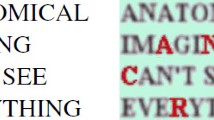Abstract
Purpose
The aim of the present report is to describe abnormal 18F-fluorodeoxyglucose (FDG) accumulation patterns in the pleura and lung parenchyma in a group of lung cancer patients in whom lung infarction was present at the time of positron emission tomography (PET).
Methods
Between November 2002 and December 2003, a total of 145 patients (102 males, 43 females; age range 38–85 years) were subjected to whole-body FDG PET for initial staging (n=117) or restaging (n=11) of lung cancer or for evaluation of solitary pulmonary nodules (n=17). Of these patients, 24 displayed abnormal FDG accumulation in the lung parenchyma that was not consistent with the primary lesion under investigation (ipsilateral n=12, contralateral n=9 or bilateral n=3). Without correlative imaging, this additional FDG uptake would have been considered indeterminate in differential diagnosis.
Results
Of the 24 patients who were identified as having such lesions, six harboured secondary tumour nodules diagnosed as metastases, while in three the diagnosis of a synchronous second primary lung tumour was established. Additionally, nine patients were identified as having post-stenotic pneumonia and/or atelectasis (n=6) or granulomatous lung disease (n=3). In the remaining six (4% of all patients), a diagnosis of recent pulmonary embolism that topographically matched the additional FDG accumulation (SUVmax range 1.4–8.6, mean 3.9) was made. Four of these six patients were known to have pulmonary embolism, and hence false positive interpretation was avoided by correlating the PET findings with those of the pre-existing diagnostic work-up. The remaining two patients were harbouring small occult infarctions that mimicked satellite nodules in the lung periphery. Based on histopathological results, the abnormal FDG accumulation in these two patients was attributed to the inflammatory reaction and tissue repair associated with the pathological cascade of pulmonary embolism.
Conclusion
In patients with pulmonary malignancies, synchronous lung infarction may induce pathological FDG accumulation that can mimic active tumour manifestations. Identifying this potential pitfall may allow avoidance of false positive FDG PET interpretation.


Similar content being viewed by others
References
Verboom P, van Tinteren H, Hoekstra OS, Smit EF, van den Bergh JH, Schreurs AJ, et al. Cost-effectiveness of FDG-PET in staging non-small cell lung cancer: the PLUS study. Eur J Nucl Med Mol Imaging 2003;30:1444–9.
Higashi K, Ueda Y, Matsunari I, Kodama Y, Ikeda R, Miura K, et al. 11C-acetate PET imaging of lung cancer: comparison with 18F-FDG PET and 99mTc-MIBI SPET. Eur J Nucl Med Mol Imaging 2004;31:13–21.
Kamel EM, Zwahlen D, Wyss MT, Stumpe KD, von Schulthess GK, Steinert HC. Whole-body 18F-FDG PET improves the management of patients with small cell lung cancer. J Nucl Med 2003;44:1911–7.
Fischer BM, Mortensen J, Dirksen A, Eigtved A, Hojgaard L. Positron emission tomography of incidentally detected small pulmonary nodules. Nucl Med Commun 2004;25:3–9.
Asad S, Aquino SL, Piyavisetpat N, Fischman AJ. False-positive FDG positron emission tomography uptake in nonmalignant chest abnormalities. AJR Am J Roentgenol 2004;182:983–9.
Mountain CF. The international system for staging lung cancer. Semin Surg Oncol 2000;18:106–15.
Carretta A, Ciriaco P, Canneto B, Nicoletti R, Del Maschio A, Zannini P. Therapeutic strategy in patients with non-small cell lung cancer associated to satellite pulmonary nodules. Eur J Cardiothorac Surg 2002;21:1100–4.
Costa DC, Visvikis D, Crosdale I, Pigden I, Townsend C, Bomanji J, et al. Positron emission and computed X-ray tomography: a coming together. Nucl Med Commun 2003;24:351–8.
Lardinois D, Weder W, Hany TF, Kamel EM, Korom S, Seifert B, et al. Staging of non-small-cell lung cancer with integrated positron-emission tomography and computed tomography. N Engl J Med 2003;348:2500–7.
Barghouth G, Yersin B, Boubaker A, Doenz F, Schnyder P, Delaloye AB. Combination of clinical and V/Q scan assessment for the diagnosis of pulmonary embolism: a 2-year outcome prospective study. Eur J Nucl Med Mol Imaging 2000;27:1280–5.
Goldhaber SZ. Pulmonary embolism. Lancet 2004;363:1295–305.
Guadagni F, Ferroni P, Basili S, Facciolo F, Carlini S, Crecco M, et al. Correlation between tumor necrosis factor-alpha and D-dimer levels in non-small cell lung cancer patients. Lung Cancer 2004;44:303–10.
Fedullo PF, Tapson VF. Clinical practice. The evaluation of suspected pulmonary embolism. N Engl J Med 2003;349:1247–56.
Hany TF, Heuberger J, von Schulthess GK. Iatrogenic FDG foci in the lungs: a pitfall of PET image interpretation. Eur Radiol 2003;13:2122–7.
Miceli M, Atoui R, Walker R, Mahfouz T, Mirza N, Diaz J, et al. Diagnosis of deep septic thrombophlebitis in cancer patients by fluorine-18 fluorodeoxyglucose positron emission tomography scanning: a preliminary report. J Clin Oncol 2004;22:1949–56.
Osaki T, Sugio K, Hanagiri T, Takenoyama M, Yamashita T, Sugaya M, et al. Survival and prognostic factors of surgically resected T4 non-small cell lung cancer. Ann Thorac Surg 2003;75:1745–51.
Kjaer A, Lebech AM, Eigtved A, Hojgaard L. Fever of unknown origin: prospective comparison of diagnostic value of 18F-FDG PET and 111In-granulocyte scintigraphy. Eur J Nucl Med Mol Imaging 2004;31:622–6.
Bleeker-Rovers CP, de Kleijn EM, Corstens FH, van der Meer JW, Oyen WJ. Clinical value of FDG PET in patients with fever of unknown origin and patients suspected of focal infection or inflammation. Eur J Nucl Med Mol Imaging 2004;31:29–37.
Chen DL, Mintun MA, Schuster DP. Comparison of methods to quantitate 18F-FDG uptake with PET during experimental acute lung injury. J Nucl Med 2004;45:1583–90.
Kaim AH, Weber B, Kurrer MO, Westera G, Schweitzer A, Gottschalk J, et al. 18F-FDG and 18F-FET uptake in experimental soft tissue infection. Eur J Nucl Med Mol Imaging 2002;29:648–54.
Sorensen HT, Mellemkjaer L, Olsen JH, Baron JA. Prognosis of cancers associated with venous thromboembolism. N Engl J Med 2000;343:1846–50.
Acknowledgements
The authors gratefully acknowledge the technical assistance provided by Chantal Séverin, Murielle Croisier and Jérôme Malterre. Part of this work was presented at the 51st Annual Meeting of the Society of Nuclear Medicine, Philadelphia, PA, June 19–23, 2004.
Author information
Authors and Affiliations
Corresponding author
Rights and permissions
About this article
Cite this article
Kamel, E.M., Mckee, T.A., Calcagni, ML. et al. Occult lung infarction may induce false interpretation of 18F-FDG PET in primary staging of pulmonary malignancies. Eur J Nucl Med Mol Imaging 32, 641–646 (2005). https://doi.org/10.1007/s00259-004-1718-3
Received:
Accepted:
Published:
Issue Date:
DOI: https://doi.org/10.1007/s00259-004-1718-3




